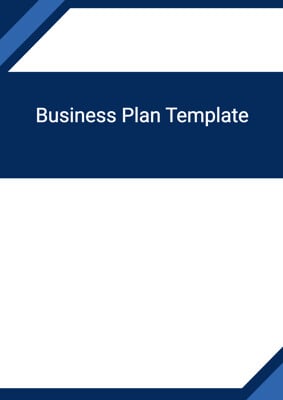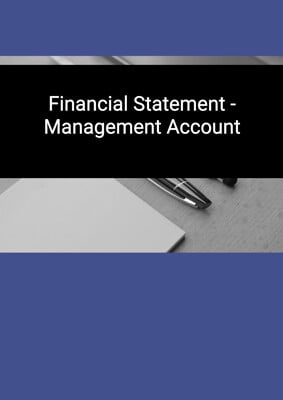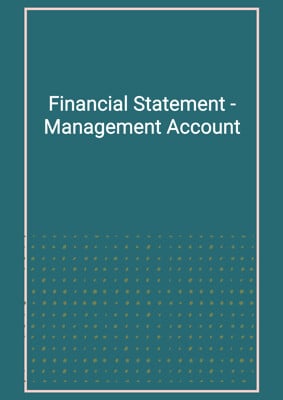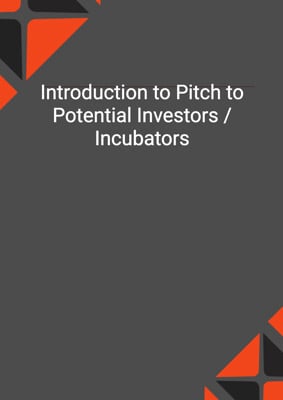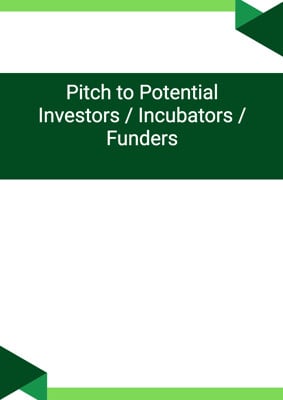How to Tailor the Document for Your Need?
01
Create Document
Click "Create Document" button and the document will be prepared with your account details automatically filled in.
02
Fill Information
Please fill in any additional information by following the step-by-step guide on the left hand side of the preview document and click the "Next" button.
03
Get Document
When you are done, click the "Get Document" button and you can download the document in Word or PDF format.
04
Review Document
Please review the document carefully and make any final modifications to ensure that the details are correct before publication / distribution.
Document Preview
Document Description
The document titled 'Pitch to Potential Investors / Incubators / Funders' is a crucial tool for entrepreneurs seeking investment or support for their business idea. It serves as a comprehensive pitch that highlights the importance and potential of the proposed project. The document is divided into several sections, each providing detailed information about different aspects of the business.
The introduction section of the document provides a brief overview of the project, including its name and proposition. It also emphasizes the importance of the service or product being offered. The introduction aims to capture the attention of potential investors by presenting a compelling case for the business.
The team section focuses on the individuals behind the project. It introduces the key members of the management team, tech support, advisors, and well-known investors. The section highlights the team's qualifications, track record, and expertise, emphasizing why they are the right fit for the project. A short story may be included to further demonstrate the team's capabilities.
The issue/problem to resolve section explains the problem that the business aims to address. It provides a clear description of the problem without going into unnecessary details. This section helps investors understand the purpose and relevance of the proposed solution.
The solution/product/value to the user section outlines how the proposed business resolves the identified issue. It highlights the benefits that users would gain from the product or service and explains why it is needed. This section paints a picture of how the world would be improved with the implementation of the business idea.
The customer base/market size/landscape section provides insights into the target audience and market potential. It identifies the customer base and includes figures on the market size. Additionally, it explores whether the project is entering a blue ocean market with high-margin billion-dollar opportunities.
The user acquisition/marketing section explains the strategies employed to acquire customers. It discusses organic marketing methods such as word of mouth, viral marketing, referral programs, and social media. It also mentions other marketing channels like Q&A sites, search engine optimization, email marketing, partnerships, and internet advertising.
The business model section focuses on how the business generates revenue. It explains the profit margins and outlines the current revenue streams or future revenue generation plans. This section provides clarity on the financial sustainability of the project.
The competition/market adoption section analyzes the existing competitors in the market. It evaluates their performance and assesses how the market is adopting new technologies. This section helps investors understand the competitive landscape and the potential challenges the business may face.
The competitive advantages/defensibility section highlights the unique selling points of the proposed business. It explains why customers would choose this business over its competitors. Examples of competitive advantages include being the first to market, offering incentives, ease of use, attractive design, strong brand presence, and exceptional user experience.
The next stage/budget/amount seeking/resource needed section outlines the financial requirements of the project. It specifies the amount of funding sought for the next stage and provides a budget breakdown. Additionally, it highlights the resources needed to grow or scale the business and capture the identified opportunity. The section may also mention the type of support required from potential investors, such as financial backing, network connections, infrastructure support, or IT assistance.
In summary, the 'Pitch to Potential Investors / Incubators / Funders' document is a detailed and comprehensive pitch that covers all essential aspects of a business proposal. It provides a thorough introduction, addresses the problem and solution, analyzes the market and competition, and outlines the financial requirements. This document serves as a powerful tool to attract potential investors and secure support for the proposed business idea.
How to use this document?
1. Introduce the project: Begin by providing a clear and concise introduction to the project, including its name and proposition. Highlight the importance and potential of the service or product.
2. Present the team: Introduce the key members of the management team, tech support, advisors, and well-known investors. Emphasize their qualifications, track record, and expertise that make them suitable for the project.
3. Explain the problem: Clearly describe the problem that the business aims to resolve. Keep the explanation concise, focusing on the key aspects without unnecessary details.
4. Present the solution: Outline how the proposed business addresses the identified problem. Highlight the value it brings to users and explain why it is needed. Paint a compelling picture of how the world would be improved with the implementation of the business idea.
5. Identify the target audience and market potential: Provide insights into the customer base and market size. Include figures and statistics to support the market potential. Discuss whether the project is entering a blue ocean market with high-margin billion-dollar opportunities.
6. Explain user acquisition and marketing strategies: Describe the methods used to acquire customers, such as organic marketing, word of mouth, viral marketing, and social media. Mention other marketing channels like Q&A sites, search engine optimization, email marketing, partnerships, and internet advertising.
7. Clarify the business model: Explain how the business generates revenue and outline the profit margins. If there is no revenue yet, describe the future revenue generation plans. Ensure clarity on the financial sustainability of the project.
8. Analyze the competition and market adoption: Identify the existing competitors and evaluate their performance. Assess how the market is adopting new technologies. Provide insights into the competitive landscape and potential challenges.
9. Highlight competitive advantages and defensibility: Emphasize the unique selling points of the proposed business. Explain why customers would choose this business over its competitors. Focus on factors like being the first to market, offering incentives, ease of use, attractive design, strong brand presence, and exceptional user experience.
10. Specify the next stage, budget, and resource needs: Outline the financial requirements for the next stage of the project. Specify the amount of funding sought and provide a budget breakdown. Highlight the resources needed to grow or scale the business and capture the identified opportunity. Mention the type of support required from potential investors, such as financial backing, network connections, infrastructure support, or IT assistance.
Note: The guidance provided above is a concise and precise step-by-step approach to using the 'Pitch to Potential Investors / Incubators / Funders' document. It focuses on the practical aspects and implications of each section, rather than completing the document itself.
Not the right document?
Don’t worry, we have thousands of documents for you to choose from:


